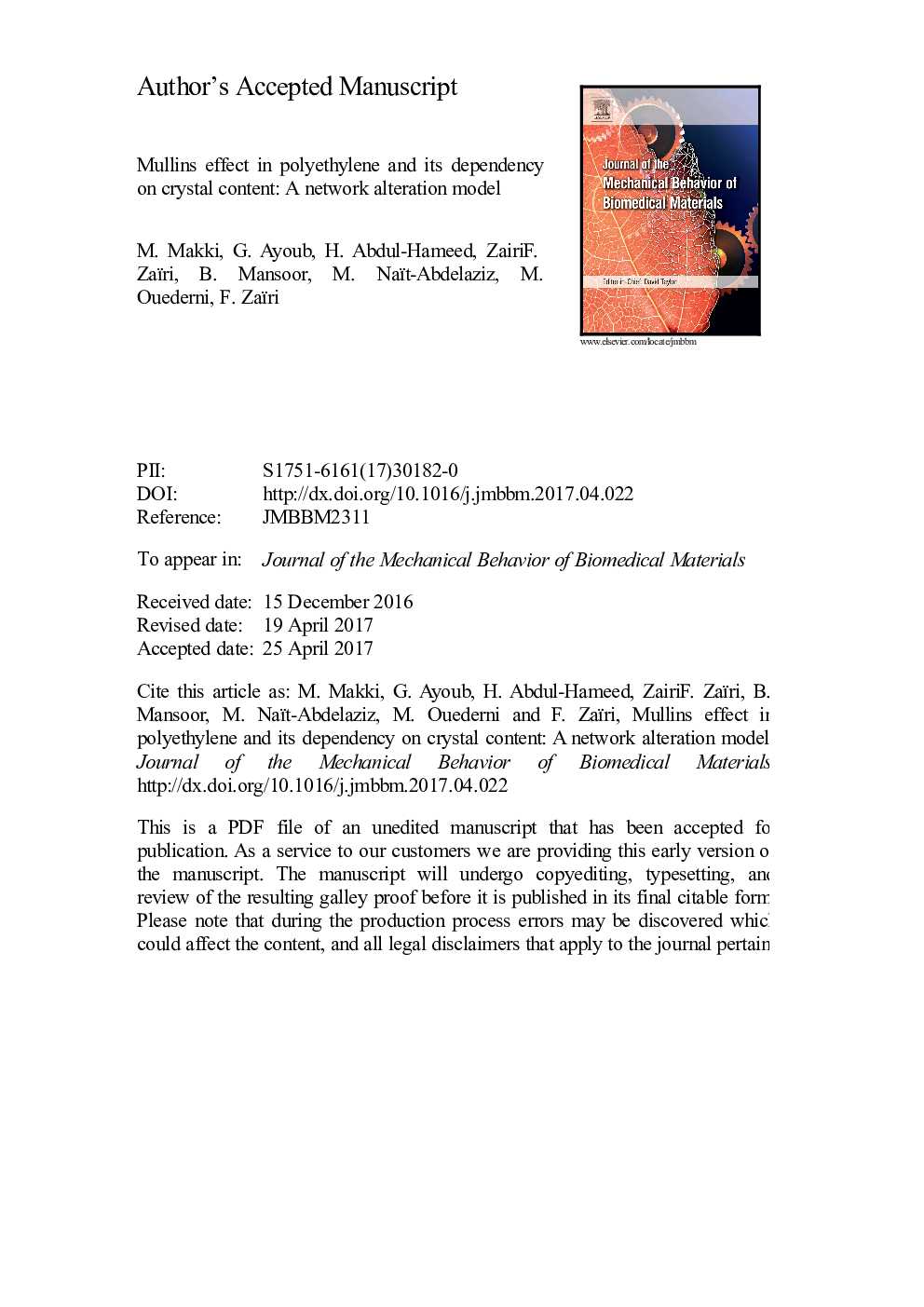| Article ID | Journal | Published Year | Pages | File Type |
|---|---|---|---|---|
| 5020494 | Journal of the Mechanical Behavior of Biomedical Materials | 2017 | 47 Pages |
Abstract
This contribution is focused on the Mullins effect in polyethylene. An ultra-low-density polyethylene with 0.15 crystal content, a low-density polyethylene with 0.3 crystal content and a high-density polyethylene with 0.72 crystal content are subjected to cyclic stretching over a large strain range. Experimental observations are first reported to examine how the crystal content influences the Mullins effect in polyethylene. It is found that the cyclic stretching is characterized by a stress-softening, a hysteresis and a residual strain, whose amounts depends on the crystal content and the applied strain. A unified viscohyperelastic-viscoelastic-viscoplastic constitutive model is proposed to capture the polyethylene response over a large strain range and its crystal-dependency. The macro-scale polyethylene response is decomposed into two physically distinct sources, a viscoelastic-viscoplastic intermolecular part and a viscohyperelastic network part. The local inelastic deformations of the rubbery amorphous and crystalline phases are considered by means of a micromechanical treatment using the volume fraction concept. Experimentally-based material kinetics are designed by considering the Mullins effect crystal-dependency and are introduced into the constitutive equations to capture the experimental observations. It is shown that the model is able to accurately reproduce the Mullins effect in polyethylene over a large strain range. The inherent deformation mechanisms are finally presented guided by the proposed constitutive model.
Related Topics
Physical Sciences and Engineering
Engineering
Biomedical Engineering
Authors
M. Makki, G. Ayoub, H. Abdul-Hameed, F. Zaïri, B. Mansoor, M. Naït-Abdelaziz, M. Ouederni,
